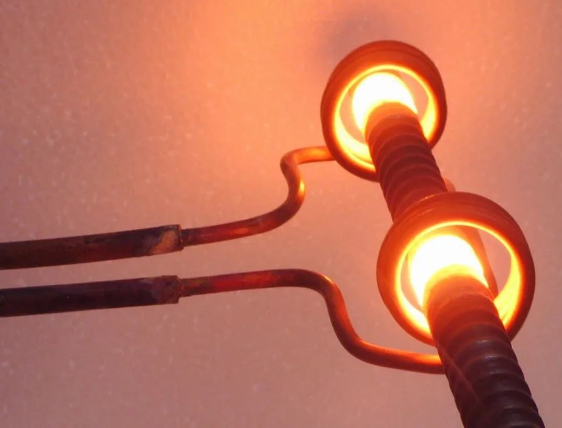Quenching oil selection and precautions
May. 21, 2024
Quenching oil is a process oil used as a quenching medium. Quenching oil is divided into general quenching oil and special quenching oil. General quenching oil mainly includes ordinary quenching oil, rapid quenching oil, rapid bright quenching oil, super-speed quenching oil, vacuum quenching oil and isothermal quenching oil. Special quenching oil includes quenching oil for bearings, fasteners, crankshafts, hand tools, etc.

1.Ordinary quenching oil (quenching at oil temperature of 60°C)
Ordinary quenching oil is mainly suitable for quenching ferroalloys with good hardenability, such as small-size bearing steel and tool and mold steel parts. Ordinary quenching oil can be mainly used for general process quenching of salt bath furnaces, box furnaces, and pit furnaces, and should not be mixed with other oils. When changing oil, clean the oil sump thoroughly. The optimal operating temperature of this oil is 50°C to 80°C, and the maximum operating temperature does not exceed 80°C to avoid affecting the service life. A stirring or oil circulation device should be installed in the oil tank to further improve the cooling capacity of the oil so that the surface of the workpiece can be cooled evenly, and new oil should be added to the oil tank regularly.
2. Bright quenching oil (quenching at 70°C oil temperature)
Bright quenching oil is a cooling medium for parts that are heated and quenched in a controlled atmosphere. Its main feature is that the surface of the parts is bright after quenching. It is mainly used for small parts that will not undergo secondary processing after quenching, such as precision instrument parts, watches and Small measuring tool parts. In addition to meeting the cooling performance requirements, bright quenching oil can prevent the oxidized products from forming large micelles to adhere to the surface of the part, and replace the insoluble products that have been attached to the surface of the part to ensure that the surface of the quenched part is bright.
Bright quenching oil is mainly used as a cooling medium during quenching in protective atmosphere furnaces. It can be used for quenching small and medium-section bearing steels, tool and die steels, measuring tool steels, instruments and other parts. It can also be used in non-protective atmosphere quenching furnaces to process steel with good hardenability. . It is better to use the oil at a temperature of 60°C to 80°C. The moisture content must be controlled during use. When the moisture content is greater than 200 μg/g, the brightness drops sharply and the quenching oil must be treated, otherwise the quenching quality of the parts will be seriously affected.
3.Rapid bright quenching oil (quenching at 80°C oil temperature)
Rapid bright quenching oil is also used for quenching under a protective atmosphere as a cooling medium. The difference between this oil and bright quenching oil is that it cools quickly and is mainly used for quenching materials with poor hardenability and larger parts in a protective atmosphere.
Rapid bright quenching oil is mainly suitable for protective atmosphere quenching in automobiles, tractors, bearings and textile machinery industries. It can be used for carburizing and carbonitriding quenching of automobile gears. It can also be used as a cooling medium when other steel materials are quenched in a protective atmosphere or in non-protective atmosphere furnaces.
The maximum oil temperature during use does not exceed 100°C, ensuring the oil has long-term and stable cooling capacity and good quenching brightness. It is strictly forbidden to mix water and other oils. A small amount of water may seriously affect the surface condition of quenched parts. Carbon black and sulfur content should be strictly controlled in the protective atmosphere, which also affects the quality of parts after quenching.
4.Vacuum quenching oil (the oil temperature is quenched at 80°C)
In some special industrial sectors, general heat treatment technology cannot meet the use requirements, so vacuum heat treatment technology has been developed. Vacuum quenching oil is suitable for quenching large and medium-sized aviation structural steel, bearing steel, tool and die steel and other alloy steel.
When used for the first time, it should be pre-evacuated at 66000Pa for 10 to 20 minutes to remove the air mixed in the oil to prevent the air mixed in the oil from carrying the oil into the pipeline and vacuum unit due to too low vacuum.
The vacuum heat treatment process can prevent the workpiece from oxidation, decarburization, carburization, and reduction of deformation. It not only increases the life of the parts, but also does not pollute the air. Therefore, there are some special requirements for quenching oil:
1) Low saturated vapor pressure
The saturated vapor pressure of oil is low, and the evaporation amount is small. In addition, the evaporation amount of oil changes with changes in temperature and pressure. When the pressure decreases and the temperature increases, the evaporation amount will increase. The large amount of evaporation can easily cause pollution in the furnace and affect the vacuum effect.
2) Good cooling performance
Because under vacuum heat treatment conditions, the pressure decreases and the boiling point decreases, so the workpiece is prone to boiling. The surface of the processed workpiece is clean, which lengthens the film boiling stage and reduces the intensity of cooling. Therefore, the quenching oil is required to have high cooling capacity within a wide pressure range.
3) Good brightness and thermal stability
The workpiece is easy to react with residual carbon, residual sulfur, oxygen, moisture, acid, etc. in the quenching oil, so the vacuum quenching oil must have high brightness and thermal stability.









